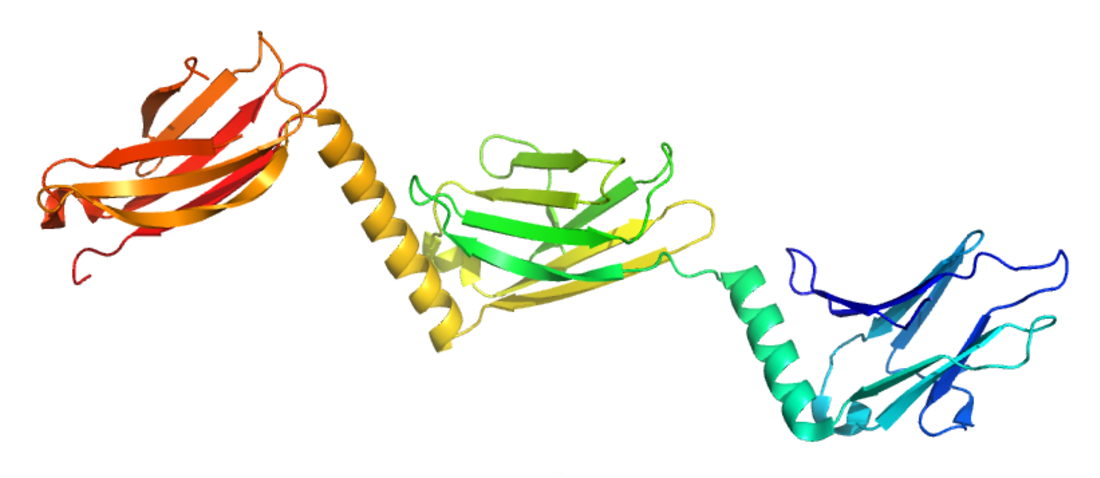Top Qs
Timeline
Chat
Perspective
MYOM1
Protein-coding gene in humans From Wikipedia, the free encyclopedia
Remove ads
Myomesin-1 is a protein that in humans is encoded by the MYOM1 gene.[5][6] Myomesin-1 is expressed in muscle cells and functions to stabilize the three-dimensional conformation of the thick filament. Embryonic forms of Myomesin-1 have been detected in dilated cardiomyopathy.
Remove ads
Structure
Alternatively spliced variants of MYOM1, including EH-myomesin,[7] Skelemin[8] and Myomesin-1[8][9][10] have been identified; with Skelemin having an additional 96 amino acids rich in serine and proline residues.[8] Myomesin-1, like myomesin 2 and titin, is a member of a family of myosin-associated proteins containing structural modules with strong homology to either fibronectin type III (motif I) or immunoglobulin C2 (motif II) domains. Myomesin-1 bears uniqueness within this family in that it has intermediate filament core-like motifs, one near each terminus.[11] Myomesin-1 and Myomesin-2 each have a unique N-terminal region followed by 12 modules of motif I or motif II, in the arrangement II-II-I-I-I-I-I-II-II-II-II-II. The two proteins share 50% sequence identity in this repeat-containing region. The head structure formed by these 2 proteins on one end of the titin string extends into the center of the M band. Alternatively spliced, tissue-specific transcript variants encoding different isoforms have been identified.[12] Myomesin-1 can dimerize in an anti-parallel fashion via its C-terminal region.[13]
Remove ads
Function
Titin, together with its associated proteins, interconnects the major structure of sarcomeres, the M bands and Z discs. The C-terminal end of the titin string extends into the M line, where it binds tightly to Myomesin-1 and myomesin 2. Skelemin/Myomesin-1 is concentrated at peripheral regions of M-bands, and is postulated to link myofibrils with the intermediate filament cytoskeleton.[11] Skelemin/Myomesin-1 has been detected in the nucleus as well as the cytoskeletal, suggesting that it may play a role in gene expression.[14] Myomesin-1 functions to mediate stretch-induced signaling,[15] and the EH-myomesin splice variant, expressed in embryonic hearts and in dilated cardiomyopathy, can modulate its elasticity.[16]
Remove ads
Clinical Significance
The fetal EH-myomesin alternatively spliced form of MYOM1 has been shown to be reexpressed at an early timepoint in the progression of dilated cardiomyopathy, coincident with isoform switches in titin.[17]
MYOM1 has also been shown to be abnormally spliced in patients with myotonic dystrophy type I; specifically, exon 17a.[18]
Interactions
Skelemin/Myomesin-1 has been shown to interact with:
References
Further reading
Wikiwand - on
Seamless Wikipedia browsing. On steroids.
Remove ads






